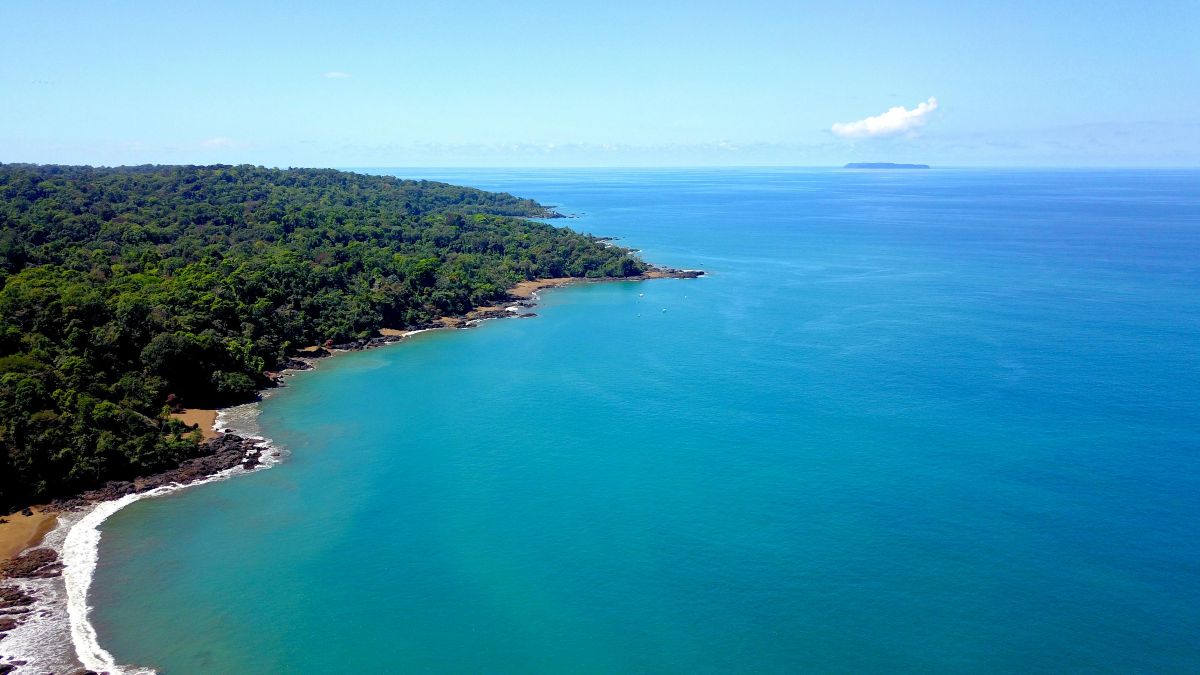Statistics matter and how statistics are presented matter. In this annually updated article, we talk about how the Costa Rica homicide rate in 2024 compared with its Central American neighbors (and also the wider world).
One of the most frequent discussions on the expat social media groups in Costa Rica is about crime and safety. Time and time again someone not in Costa Rica asks about crime and it sets off a gigantic controversy among those of us here in-country.
You see a chasm opening up between those who say Costa Rica has very little or no crime and those who say Costa Rica is a crime-ridden hellhole. The crime-ridden-hellhole guys deride the no-crime guys as “unicorns” and the no-crime guys call the crime-ridden people “angry” or “bitter”. They’re told they hate Costa Rica and need to leave. Ludicrous. Talk about contentious.
I mean, I can love Costa Rica and also talk about crime. Costa Ricans do it all the time. Loving something means being open and direct about it, not pretending it’s something it’s not.
The truth lies somewhere between no-crime and crime-ridden, and is also very subjective. If you’re coming from a village in rural Maine, for example, you’ll think Costa Rica more dangerous than your last home. But if you’re coming from, say, Baltimore, most parts of Costa Rica will feel like an oasis of tranquility.
In the tenth annual edition of our yearly round-up, InSight Crime analyzes the organized crime dynamics behind homicides in every country inof the region. In 2024, violence continued to hit the Caribbean despite a general decrease in murders acrossin Latin America. Learn more in… pic.twitter.com/BumT1xanSP
— InSight Crime (@InSightCrime) February 27, 2025
Staying Subjective
The key is to remember that more often than not, the crime-denying “unicorns” are trying to sell something (usually real estate, but sometimes just their own peace of mind to themselves, justifying they’ve made the right move) and the crime-ridden-hellhole expats have personal experiences that skew their subjective. The honest answer is that Costa Rica is part of Central America, and Central America is still one of the most dangerous regions on earth, although steadily getting safer.
In last year’s update, we reported that homicide rates were down in five countries – Belize, El Salvador, Guatemala, Honduras, and Nicaragua. Panama and Costa Rica both posted higher rates than 2022. This year, according to the tried and tested annual Insight Crime Homicide Round-Up that we use each year, we can say that Costa Rica, El Salvador, Guatemala, Honduras, and Nicaragua all came in lower in 2024 than 2023. Panama’s homicide rate increased by 3.2% and Belize’s by 13% (due to a surge in control of drug markets).
This makes Costa Rica, who last year had its worst ever year for homicide, find a small level of relief in 2024, although it’s still the second worst-year on record. Better, yes, for sure. But not good. It’s worth pointing here that the difference from 2022 to 2023 was a massive 41% raise, so things seem to be settling at this generally higher level.
How Does Costa Rica Compare With Other countries in Central America?
As discussed above, Costa Rica saw its homicide rate drop slightly to 16.6 per 100K in 2024, a 3.5% decrease from the record-high 17.2 in 2023. While any reduction is welcome, this still makes 2024 the second deadliest year on record for Costa Rica, and places it as the country with the third highest murder rate in Central America.
El Salvador and Honduras Show Big Improvements
The massive success story in Central America continues to be El Salvador, without question. Its homicide rate fell again in 2024 to a record-low 1.9 per 100K, representing another 20.8% decrease from 2023’s already impressive 2.4 per 100K. This marks nine consecutive years of declining numbers since 2015, when El Salvador had one of the highest rates in the world at 105.2. El Salvador’s rate remains the lowest in Central America by a significant margin.
In El Salvador, President Nayib Bukele continues to receive credit for making his country safer. His anti-gang crackdown remains a huge part of what makes him so popular. But it’s worth noting that while the numbers are impressive, questions about how these statistics are gathered and reported persist. The sustained drop from 36.0 in 2019 to 1.9 in 2024 is nonetheless remarkable.
Honduras posted the most dramatic improvement in 2024, with its homicide rate falling by 26.5% from 31.1 to 25.3 per 100K. While still the highest in the region, this represents significant progress that appears to be part of a broader trend that began several years ago.
Mixed Trends Elsewhere
Other trends in the region were mixed. Nicaragua claims a rate of 6.0 per 100K, though transparency issues make this figure difficult to verify. Guatemala saw a modest improvement with its rate dropping to 16.1 per 100K. Panama, traditionally one of the safer countries in the region, experienced a slight increase to 12.9 per 100K. Belize, which had been showing improvement in recent years, reversed course with its homicide rate rising 13% from 19.2 to 21.7 per 100K in 2024, making it the second highest in the region after Honduras.
When looking at the overall picture, Costa Rica finds itself in the middle tier of Central American countries in terms of homicide rates – safer than Honduras and Belize, comparable to Guatemala, but more dangerous than Panama, Nicaragua, and El Salvador. The fact that Costa Rica and El Salvador have essentially switched positions in regional safety rankings over the past decade represents one of the most dramatic shifts in the Central American security landscape.
2024 Latin America Homicide Rate: Which Country Had the Lowest Rate? https://t.co/8VcBFjn67o via @GaldyINFO
— El Salvador News & INFO (@El_SalvadorINFO) February 27, 2025
The Importance of Accurate Data
Going back to the Costa Rica social media groups, the point is that no-one seems interested in giving out accurate data. Perhaps accuracy is a dirty word in this world of “misinformation” and “fake news”, but facts matter. Not only do facts matter, but the way we present facts matter. When we cherry-pick our facts to fit our narrative, we might as well be making them up.
With murder rates, a common tactic in the social media groups is comparing the entire country of Costa Rica to individual towns or cities in the US.
“Costa Rica has fewer homicides than Chicago, LA, Florida, Dallas, New York“, wrote someone on a Costa Rica expat page on Facebook a few years back. It compelled me to write back to him on the thread:
“Average global homicide rate: 6.2 per 100,000. US homicide rate: 5.3 per 100,000. Costa Rica homicide rate: 12.1 per 100,000. Comparing countries to individual cities or states are disingenuous. Compare cities to cities, states to states, and countries to countries, please. Oh yeah – Spain homicide rate: 0.9 per 100,000.”
I wrote the above in 2018, talking about 2017, so the numbers have changed since then. In 2024, the U.S. homicide rate was estimated at 5.0 per 100K, down from 6.0 in 2023. Spain’s rate remains remarkably low – around 0.7 per 100K based on the most recent available data. Even with changes in the specific numbers over time, the fundamental comparison remains valid.
Keeping Perspective
So although the exact figures have evolved, the premise has not. Aside from El Salvador’s remarkable turnaround, Central America (including Costa Rica) still has far higher homicide rates than the U.S., which itself has a far higher rate than most European countries.
My frustration is that so many people, in their eagerness to downplay Costa Rica’s homicide rate, resort to these misleading comparisons. It’s simply a fact that the murder rate in Costa Rica is higher than in the U.S and Europe. Acknowledging this doesn’t make Costa Rica a bad country. It doesn’t even make it unsafe for most visitors and residents. After all, the U.S. homicide rate is significantly higher than Spain’s, yet Spanish tourists don’t avoid the United States en masse.
If you insist on making these cross-category comparisons, consider this: Atlanta’s homicide rate last year was 16.7 per 100,000, almost identical to Costa Rica’s overall rate. But Limón, on Costa Rica’s Caribbean coast, had a 2024 homicide rate of 37.8 per 100K – far higher than Honduras and comparable to cities like Detroit.
This comparison cuts both ways. For someone who claims Costa Rica is safer than the U.S. because certain American cities have higher murder rates, I can flip it around and compare Limón’s murder rate with, say, New Hampshire’s or Utah’s (1.1 and 2.7 per 100K if you’re interested).
All I ask is that we keep our comparisons honest and equivalent. When discussing a nation’s homicide rate, it’s only meaningful if you’re comparing it to another nation with its various cities and demographics. As I told that fellow on Facebook back in 2018, don’t be disingenuous with this stuff. Please.
James Dyde is the editor of centralamerica.com. He lives in Escazu, Costa Rica.




